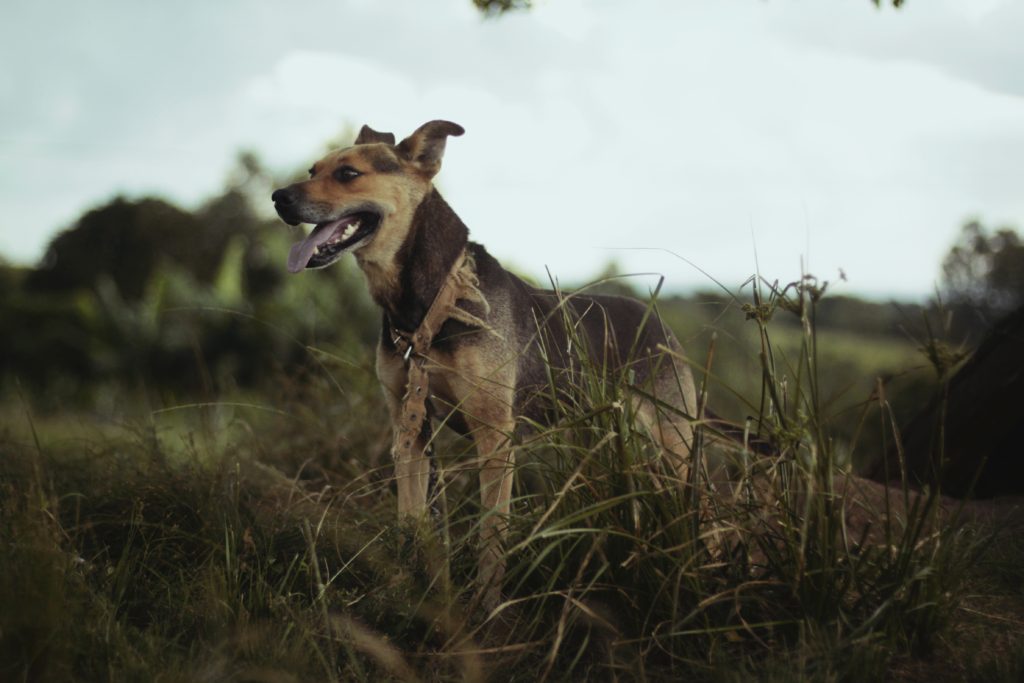
More than ever before dogs and owners are being forced to live in very close proximity. Some dogs, just like humans, are a little more precious about personal space and problems can arise when both owners and other dogs fail to recognise signs of anxiety, frustration or irritation in another dog. This month I want to focus on some aspects of dog communication and how taking the time to learn a little more about this can help us all get along a bit better. Dogs are uniquely equipped to read the human face and they are exquisitely attuned to our body language and spent much of their time watching us, perhaps owners should return the compliment and take time to learn a bit more about what our dogs might be trying to tell us.
Below are three common scenarios where canine signalling is frequently misinterpreted by humans.
You, or someone else, try to cuddle your dog. As you move in for contact your dog slightly turns his face away from you and yawns.
What you might think: Poor thing he must be tired and you lean in for a comforting embrace.
What your dog is actually saying: Please back off, you are invading my personal space in a way I find uncomfortable.
Moving the head or even the whole body away from something is the dog’s way to try to avoid or break contact. Yawning is just one way a dog expresses unease (of course the dog may also be tired, examination of the context usually tells us what is going on). Other things the dog might do are shaking off even though his fur is dry, or he might suddenly start scratching or suddenly sniffing the ground in a focussed way.
You are out walking with your dog and are keen to meet other dogs and their owners. You see a beautiful dog walking with her owner on a lead. You rush towards them to say hello. The dog goes very still, fixes her eyes on you and begins to raise her tail. As you get closer she starts to wag the tip of her tail briskly, still holding it high.
You think: she’s wagging her tail, she must be friendly, and you continue to walk forward to say hello.
What the dog is actually saying: I’m not sure about you and your dog, I cannot move away because I am on a lead, but I am ready and confident to take action.
A wagging tail is not necessarily friendly at all, and can signal quite the opposite. Wagging tails simply indicate some kind of emotional arousal. Dogs wag tails to greet people or dogs in a friendly way but they also wag their tail when they are angry, frustrated or even when they are excited, focussing on a task they enjoy. In general, a tail held level to the body and wagged in wide sweeps is friendly. A very high or low tail, with very fast or very slow movements, indicates fear, anger or high alert. New studies show that a tendency to wag the tail more to the right or the left indicates if your dog is more negative or positive about a situation. Remember, different breeds and types of dog have a different baseline tail height, get to know your dog’s tail patterns.
You walk down the street with your dog on the lead and another dog is also approaching on the lead, head on to you. Your dog starts to lick his lips repeatedly and seems reluctant to move forward.
You think, come on, I’m in a hurry, stop messing around.
Your dog is thinking. Help, help I’m being forced forward into a confrontation with a big, scary dog I don’t know and I feel anxious.
It is not clear that dogs consciously signal anxiety to other animals, but repeated lip licking is a sign of anxiety in dogs and many other dogs seem to recognise that signal and respond to it. However, remember some dogs are much more skilled at reading dog body language than others.
For more information see the work of canine body language expert Turid Rugaas here.
By Leonie St Clair| www.londondogstraining.co.uk
This article first appeared in the October 2017 issue of SE22 magazine.

